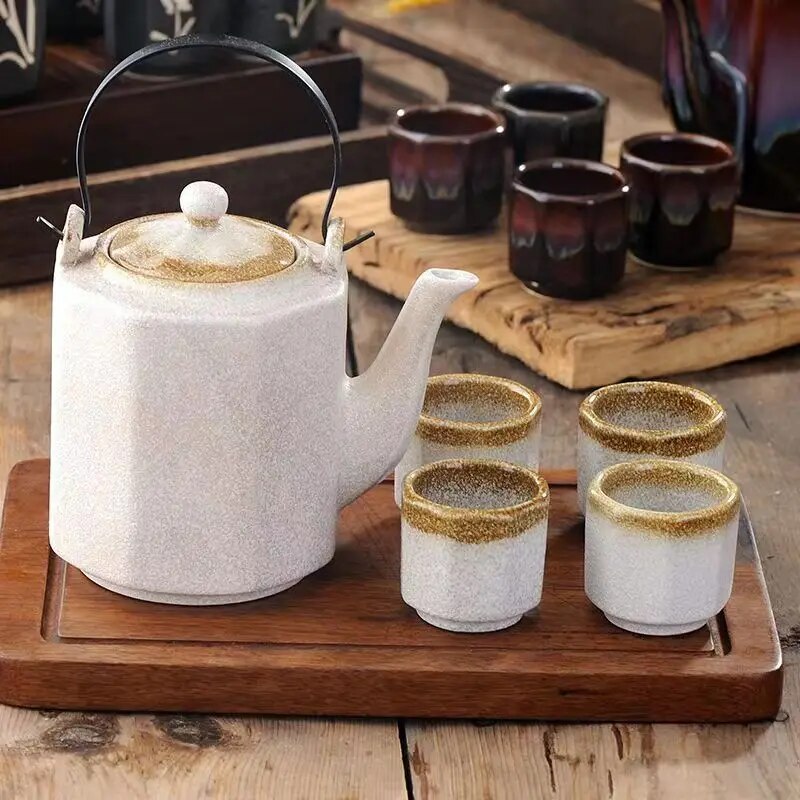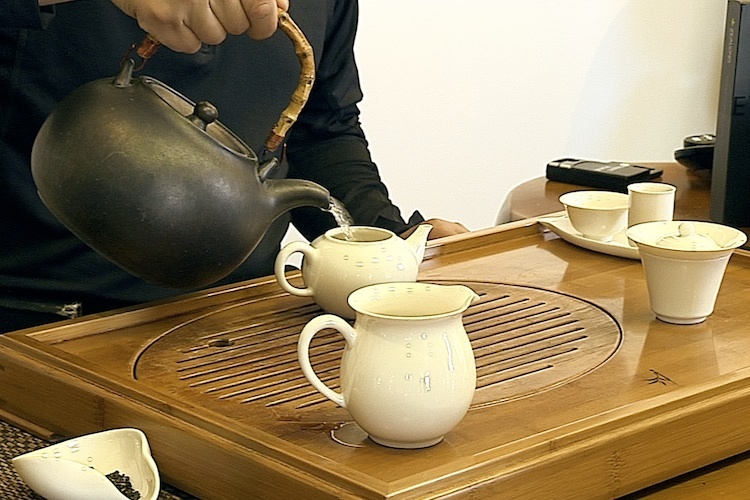Uncategorized
The Science Behind Designing the Perfect Tea Set
The Science Behind Designing the Perfect Tea Set
Tea is more than just a drink; it’s a ritual, an experience that engages all the senses. From the aroma of the leaves to the warmth of the cup, each element plays a role in crafting the perfect tea moment. While much attention is given to the quality of tea itself, the tea set you use can make a world of difference in your brewing experience. But what makes a perfect tea set? It’s not just about looks—there’s a science behind its design, material selection, and functionality that enhances both the flavor and aesthetic of your tea.
In this article, we’ll explore the science behind creating the ideal tea set, focusing on how materials, design, and function work together to elevate the tea experience.
1. The Importance of Material Selection in Tea Set Design
The material of a tea set affects both the brewing process and the drinking experience. Different materials offer unique benefits, which can enhance the flavor and aroma of tea.
Key Materials:
- Porcelain: Known for its fine texture and ability to retain heat, porcelain is often used in high-end tea sets. Its smooth, non-porous surface ensures that tea flavors are not altered during brewing. Porcelain also helps maintain the ideal temperature for delicate teas like white tea or green tea.
- Bone China: Bone china, a type of porcelain that includes bone ash in its composition, is incredibly durable and fine. It’s perfect for maintaining the delicate flavors of tea while offering a luxurious aesthetic with its translucent and smooth finish.
- Cast Iron: Cast iron teapots are ideal for black tea or oolong tea, as they retain heat efficiently, keeping tea at the optimal brewing temperature for longer. The weight of cast iron also ensures a consistent steeping process.
- Glass: Glass teapots allow you to observe the tea leaves unfurling as they brew, adding an extra layer of visual enjoyment. Glass is often used for herbal teas or flowering teas to showcase the beauty of the tea infusion.
- Clay (Yixing Clay): Yixing teapots, made from a special type of clay from China, are designed to improve the flavor of tea over time. The porous nature of the clay absorbs tea oils, which enhances the taste with each brew, making it ideal for oolong and pu-erh teas.
Why Material Matters:
- Heat Retention: Materials like porcelain and cast iron are designed to retain heat, which is crucial for achieving the perfect steeping temperature for different tea types.
- Taste Preservation: Non-reactive materials such as porcelain and bone china prevent the tea’s flavor from being altered, allowing the true taste of the leaves to shine.
- Durability: Materials like bone china and cast iron offer long-lasting durability, ensuring that your tea set can withstand frequent use without losing its charm.

2. The Science of Shape and Size in Tea Set Design
The shape and size of a tea set also play an important role in the brewing and drinking experience. Each component of the set, from the teapot to the cup, has been carefully designed to maximize the tea’s potential.
Teapot Design:
- Spout Shape: The spout of the teapot is essential for pouring control. A spout that is too wide or too narrow can cause tea to spill or pour unevenly. The ideal teapot spout is narrow enough to allow for a steady, controlled pour but wide enough to prevent drips.
- Teapot Size: The size of the teapot should be matched to the number of servings. A smaller teapot is ideal for single servings or intimate gatherings, while larger teapots are necessary for group servings. Proper capacity ensures the tea is brewed to the right strength.
Teacup Design:
- Cup Size: Teacups should be large enough to allow for a comfortable sip but not so large that the tea cools too quickly. A typical teacup holds between 6 to 8 ounces, providing enough room for the tea to be enjoyed at the perfect temperature.
- Handle Design: The handle of the cup is designed for comfort and ease of use. It should be large enough to comfortably fit fingers, yet ergonomically placed to balance the weight of the cup, ensuring a graceful sipping experience.
How Shape and Size Enhance the Tea Experience:
- Temperature Control: The right teapot shape allows for optimal heat retention, ensuring your tea remains at the ideal temperature for its brewing time.
- Pouring Precision: A well-designed spout helps pour the tea evenly, reducing spillage and mess while enhancing the overall experience.
- Aesthetic Balance: A balanced tea set, where the size of the teapot and cups complement each other, creates an aesthetically pleasing and harmonious presentation, further enhancing the visual appeal of the tea.

3. How Tea Set Functionality Influences the Brewing Process
A tea set is not just about looks; it’s about performance. Functionality plays a crucial role in ensuring that your tea is brewed to perfection.
Key Functional Elements:
- Tea Infuser: A tea infuser or built-in filter helps keep tea leaves from floating in the brew. A well-designed infuser allows the leaves to expand fully, releasing their essential oils and flavors into the water.
- Lid Fit: A tight-fitting lid on a teapot helps keep the heat in during steeping, ensuring that the tea brews at the right temperature. A poorly fitting lid will cause the temperature to drop, affecting the tea’s flavor.
- Pouring Mechanism: The teapot handle and spout must be designed to allow for a smooth and controlled pour, which is especially important for more delicate teas like green and white tea that require precise pouring to avoid over-steeping.
Functionality’s Impact on Tea Flavor:
- Infuser Design: The design of the infuser ensures that the tea leaves have enough space to fully unfurl, maximizing the flavor extraction.
- Lid Design: A tight-fitting lid helps the water stay at the optimal temperature, which is essential for brewing tea properly. For example, green tea requires a lower steeping temperature, so a good lid ensures the water doesn’t cool too quickly.
- Pour Control: A well-designed handle and spout ensure that tea is poured without spilling, preventing any dilution of the tea’s flavor by accidental water spillage.
4. The Role of Aesthetics in Tea Set Design

A tea set is not just functional; it’s a work of art. A beautiful, well-designed tea set enhances the experience both visually and emotionally, helping create an atmosphere of elegance and sophistication.
Aesthetic Considerations:
- Color and Pattern: The colors and patterns on a tea set set the tone of your tea experience. Light, pastel colors work well for delicate teas like white or green tea, while bold patterns or darker colors complement stronger teas like black tea or chai.
- Translucence: Bone china and high-quality porcelain sets are often designed to be translucent, allowing light to pass through and enhancing the visual appeal.
- Elegance: The overall elegance of a tea set contributes to the emotional experience. A beautifully crafted set can turn a simple tea break into an indulgent and luxurious moment.
Aesthetics Enhance the Experience:
- Visual Appeal: The visual beauty of the set encourages appreciation of the tea, making the brewing process feel more intentional and ritualistic.
- Mood Setting: The right tea set creates an atmosphere that complements the mood of the tea, whether it’s an intimate gathering with light tea or a celebratory afternoon with strong, bold flavors.
Conclusion
The science behind designing the perfect tea set is a blend of art and functionality, where materials, design, and performance come together to create an elevated tea experience. From the careful selection of materials to the precise design of the spout, handle, and infuser, every element plays a role in enhancing the flavors, aromas, and aesthetic of your tea. Whether you’re enjoying a quiet moment alone or hosting a tea party with friends, a well-designed tea set will enrich the ritual and transform each cup of tea into a luxurious, memorable experience.


